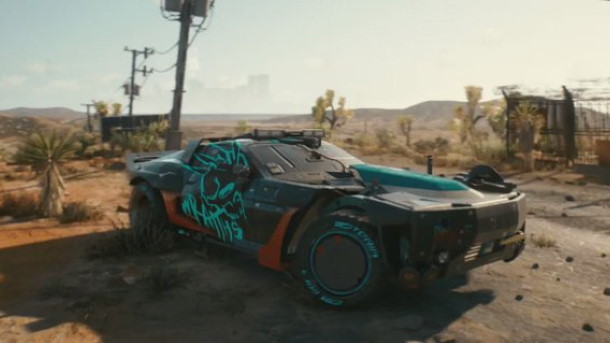It's fine that Cyberpunk 2077 is DirectX 12-only, right? Tell me it's going to be fine...
With Cyberpunk 2077 launching only using the DX12 API, we're not going to have to deal with launch day bugs, surely.


Cyberpunk 2077 lifepaths: Which to choose
Cyberpunk 2077 map: What you need to know
Cyberpunk 2077 romance options
Cyberpunk 2077 builds: Best so far
Cyberpunk 2077 Braindance: How it works
Cyberpunk 2077 cars: Race around Night City
Cyberpunk 2077 hacking: How to do it
Cyberpunk 2077 is one of the most anticipated games of the last few years and, thanks to the skill of CD Projekt Red's artists, developers, and the promise of real-time ray traced lighting effects, it looks stunning too. I've pored over Andy's glorious Cyberpunk 2077 preview playthrough and can't wait to dip my augmented toes into the murky depths of Night City and its backwaters.
But how is it going to play? Given the repeated delays of what has been a feature-complete game since January, for polishing and bug-fixing, we should expect it to run beautifully on whatever compatible PC we eventually get to play it on.
And, if CDPR's previous big game releases are anything to go by, then it probably will do. There are reports the recent preview build had to be run at 1080p in order to support the current suite of ray traced visuals on an RTX 2080 Ti, even with DLSS on. But that's okay—early build, early drivers, more optimizations to be done. That's fine.
I'm maybe still not 100 percent convinced about the resolutely first person perspective, and some of the combat doesn't truly excite me just yet, but I'm not going to be worried about that until I actually come to play it.
And I'm definitely not worried that it's a DirectX 12-only game.
Definitely not. I've only ever had great experiences with DX12-performance around launch day. No weird bugs, no odd graphical artifacts, no inexplicable crashes, no recommendations that you should actually just use whatever alternative API is offered until a suitable patch can be released that sorts out whatever is wrong with your AMD or Nvidia graphics configuration.
No wait... I am worried. All of those things have happened with DirectX 12 games.
Keep up to date with the most important stories and the best deals, as picked by the PC Gamer team.
The fact there is no fallback API option for people running other operating systems aside from Windows 10 doesn't concern me. I get that Windows 7 is still a popular OS, and as CDPR's Marcin Gollent told PCGamesHardware.com, "thanks to the introduction of DX12 support for Windows 7 SP1 that Microsoft introduced last year, the game will run on this system. We do, and will continue to test Cyberpunk 2077 on Windows 7 in an attempt to iron out any edge-cases that might arise."
So yeah, Win7 is potentially going to be Cyberpunk 2077-compatible, Windows 8.x not so much. But if you're one of the few still laboring under that failed OS, then you're probably one of those Windows Vista apologists and we don't need to concern ourselves with what you think.

But the fact there is no DirectX 11 safety net, no Vulkan API alternative, does have my day 0 patch senses tingling. Who's going to suffer? Is it going to be the people signing up to the ray-traced future of in-game lighting, the Nvidia faithful who expect to have their RTX GPUs running without issue the moment the game's released? Given the amount of dev time and roach-squashing Nvidia will generally offer out to friendly RTX-On games, I've got to hope its ray-tracing ideally will be easily, and smoothly accessible to GeForce gamers from the get-go.
Team red? That might be a different matter. Maybe it depends on how much access AMD's driver team has to the game ahead of launch. Both GPU makers have made it a real priority, and are keenly focused on ensuring day one driver releases for key game launches happen. And Cyberpunk 2077 is absolutely one of those. So hopefully that should make this an easy experience for both sides of the graphics card divide.
But who knows, certainly there have been some funky launch day issues for a whole lot of games with a DirectX 12 implementation. Thankfully they had alternative APIs you could use instead.

Best CPU for gaming: the top chips from Intel and AMD
Best graphics card: your perfect pixel-pusher awaits
Best SSD for gaming: get into the game ahead of the rest
CD Projekt Red, however, has thrown its lot in entirely with DX12, though for entirely understandable reasons.
"We opted to go with DX12 for two main reasons," Gollent tells PCGH. "Firstly, it is the standard API for the Xbox platforms, and with the game also coming to Xbox One, we naturally wanted to have it implemented as soon as possible. Secondly, it is the birthplace of DXR, and given we had plans to invest in DXR very early on, that made the choice to go with DX12 a pretty straightforward one."
The fact that CDPR is going all-in on DirectX Raytracing (DXR) on the PC is great, and I'm hopeful a laser-focus purely on DX12 might mean the sort of struggles the graphics API has introduced into other games might not be an issue with Cyberpunk 2077. Certainly CDPR has a history of solid game launches, and the multiple delays to its release suggests it's not interested in letting the game out unless it's in the best state from the beginning.
So while the DirectX 12-only situation does concern me, the fact that it's coming from CD Projekt Red gives me some confidence that it shouldn't affect the final launch of Cyberpunk 2077. I'm trying to be positive here, trying to quell the bubble of buggy DX12-based fear that's gurgling away in my gut, so if you could all just tell me I'm worrying about nothing in the comments section that would be lovely.

Dave has been gaming since the days of Zaxxon and Lady Bug on the Colecovision, and code books for the Commodore Vic 20 (Death Race 2000!). He built his first gaming PC at the tender age of 16, and finally finished bug-fixing the Cyrix-based system around a year later. When he dropped it out of the window. He first started writing for Official PlayStation Magazine and Xbox World many decades ago, then moved onto PC Format full-time, then PC Gamer, TechRadar, and T3 among others. Now he's back, writing about the nightmarish graphics card market, CPUs with more cores than sense, gaming laptops hotter than the sun, and SSDs more capacious than a Cybertruck.

